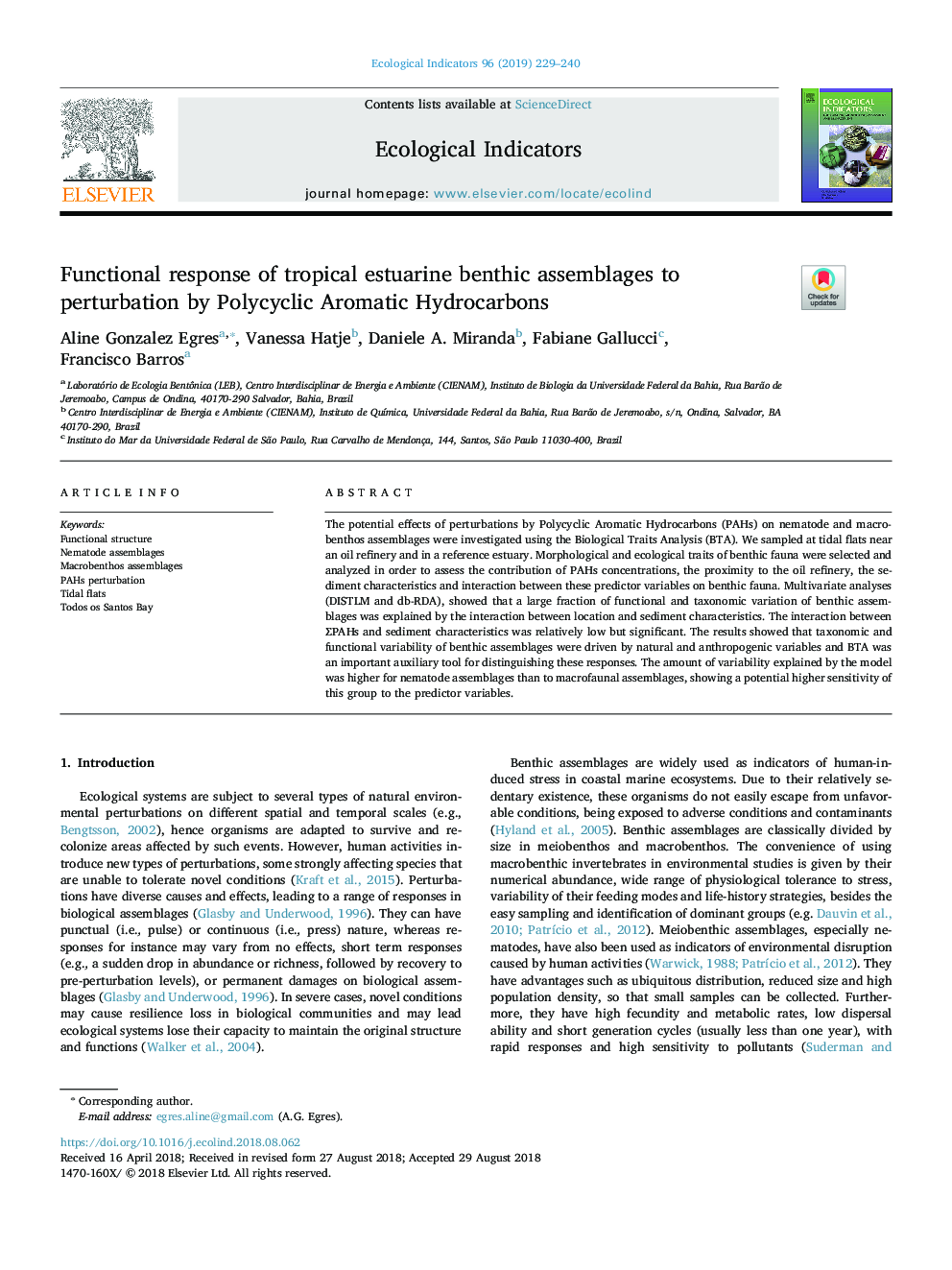| Article ID | Journal | Published Year | Pages | File Type |
|---|---|---|---|---|
| 10144222 | Ecological Indicators | 2019 | 12 Pages |
Abstract
The potential effects of perturbations by Polycyclic Aromatic Hydrocarbons (PAHs) on nematode and macrobenthos assemblages were investigated using the Biological Traits Analysis (BTA). We sampled at tidal flats near an oil refinery and in a reference estuary. Morphological and ecological traits of benthic fauna were selected and analyzed in order to assess the contribution of PAHs concentrations, the proximity to the oil refinery, the sediment characteristics and interaction between these predictor variables on benthic fauna. Multivariate analyses (DISTLM and db-RDA), showed that a large fraction of functional and taxonomic variation of benthic assemblages was explained by the interaction between location and sediment characteristics. The interaction between âPAHs and sediment characteristics was relatively low but significant. The results showed that taxonomic and functional variability of benthic assemblages were driven by natural and anthropogenic variables and BTA was an important auxiliary tool for distinguishing these responses. The amount of variability explained by the model was higher for nematode assemblages than to macrofaunal assemblages, showing a potential higher sensitivity of this group to the predictor variables.
Related Topics
Life Sciences
Agricultural and Biological Sciences
Ecology, Evolution, Behavior and Systematics
Authors
Aline Gonzalez Egres, Vanessa Hatje, Daniele A. Miranda, Fabiane Gallucci, Francisco Barros,
